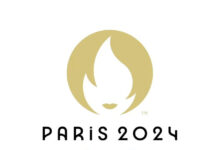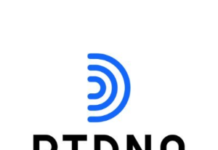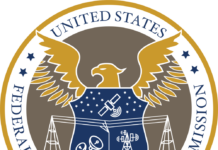
(By Mike McVay) It’s always interesting to me how the use of audio signatures, sonic, branding, logos, mnemonic sounds, and jingles go through cycles of use on the radio. We use jingles. We don’t use jingles. We take iconic audio signatures and change them on a whim. We change VO talent that are being used to image a radio station because somebody decided, “It’s time for a change.”
The excuse is sometimes, “We need a fresh coat of paint.” This happens mostly when a new Program Director (Brand Manager or whatever you want to call the position) joins a radio station.
My experience is that too few on the content creation side spend any amount of time understanding the value of Audio Branding. There is little recognition of what an audience may think of the voice talent, an evaluation of the worth of a station’s decades-long audio logo that is frequently updated in jingles, or the strength of a highly recognizable musical audio signature.
I grew up in the greater Pittsburgh, PA area. When I was a kid you could hum the KDKA Pittsburgh jingle, without singing the lyrics, and everyone knew which radio station you were referencing.
Many brands outside of radio have used sonic branding consistently for decades. NBC and their chimes have come and gone only to return with their streaming service Peacock. Netflix has the dramatic one-note chord for its audio logo. Visit a theatre and you’ll often hear the THX “The Audience is Listening” sweeping sound that bleeds into an organ chord. The ESPN “Da-Da-Da Da-Da-Da” is very memorable.
I hear it on the TV when I watch ESPN. It’s on ESPN Radio. I hear it on my phone when a sports update is being posted. Where and how these logos are used is consistent.
Some songs are used as an audio signature. Rush Limbaugh purchased the rights to use “My City Was Gone” by The Pretenders (Chrissie Hynde) as his theme song. John Tesh wrote and performed “Roundball Rock” which the NBA on NBC used as their theme song. There’s talk of it coming back if the league shifts to NBC. Fiona Apple penned and sang “The Container” which was used as the theme for the Showtime program The Affair. The audio images created by these songs, when used as audio logos, are akin to the bell ringing for Pavlov’s dogs.
The value of the audio signature, consistency of using the same voice talent, and embracing the use of jingles, is increasing at a pace that matches the growth of competition for an audience. In a media world where the audience is easily confused as to who they’re listening to, or who they’re searching for to repeat listen, the use of sonic branding helps address that issue. It’s all about making your content and radio feed memorable.
It is also important to understand the history of a station’s identity. If a station is successful, then how you image it and how you evolve your creative on-air messaging is critical. A legendary rock station in the community where I live used the same voice talent for 20+ years. Somewhere along the way, they decided they needed a VO change.
The Classic Rock station in the market found a soundalike Voice Over talent mirroring the rocker’s now-extinct imaging. It led to them stealing the image of the legacy rocker. A brilliant move by the Classic Rock station.
I am not suggesting that change is bad, nor am I saying that you shouldn’t evolve your imaging, creative message or freshen your audio logos. I am saying that you should always acknowledge the great weight that comes with change. Strive to understand the many facets of your station, especially if it’s successful.
Consider the connection that your heaviest users have with the various elements of imaging you own before you make a change. Always remember that it isn’t your birthright to be #1 in ratings or revenue. Thoughtful evaluation is always warranted. Change for the sake of change serves no purpose.
Mike McVay is President of McVay Media and can be reached at [email protected]. Read Mike’s Radio Ink archives here.









Well said, Mike! Sonic branding is essential for any station playing “variety.” Your imaging should tie songs from different eras and genres together and give your station a clear identity – an identity reinforced by your air talent.
Your preaching to the PD choir.
In my experience—
It’s the national and/or the regional programming VP’s who come in and force the change.
Brilliant!
We’ve had the same jingle package for the entire 40 years we’ve been on the air. At a recent remote a 5 year old girl walked by, saw our banner, and SANG OUR JINGLE. At any remote we do, you can almost count on someone walking by and singing our jingle when they see our banner.
Yeah, we ain’t changing our jingle.
Good one Mike
Same goes for keeping the air talent in place! When a listener flips on the radio, they should feel comfortable that they are listening to a constant friend. I believe the host is the ultimate sonic brand. Good stuff Mike!
Agree! We’ve had the exact same personalities for the past 22 years. We take care of our people as we are a SAG Aftra shop. They get terrific benefits with a 401(k) and have a great pension not to mention the healthcare plan which is the best on the planet. I don’t understand why every radio station in America is not a Sag Aftra shop.
Yeah but then you would have to, you know, invest in people. Much better to use the I Heart/Pitchman model. Someday they just might have a quarter where they break even.
Couldn’t agree more about sonic branding. I’ve been doing syndication for 22 years and every hour since the beginning 22 years ago at precisely the top of the hour is
an imaging drop that says “The Crusade to end boring radio starts here starts now” and then mentions the personalities name. Once I was out and about listening and the station entered the show late and it said “boring radio starts here starts now” ha ha. Once again, Michael, another great article with so many terrific points! We appreciate you out here in the heartland!